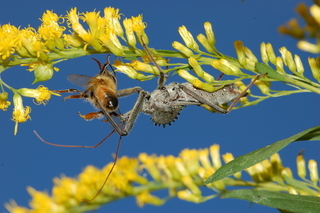|
Bee Hunt!
Discover Life no longer manages Bee Hunt. We have turned
our attention to moths, as these species are an ideal group to
study for scientific, educational, and logistic reasons. If you
would like to participate in our mothing project,
please email dl@discoverlife.org. To learn
more about Bee Hunt, please email Sam Droege.
|

Photograph by Sam Pickering
Arilus cristatus (Linne, 1763)
Wheel bug nails non-native bee
|